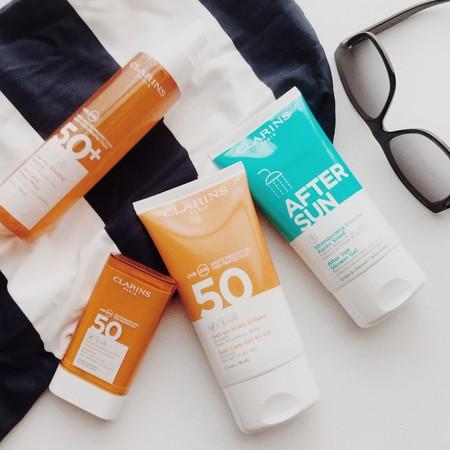This is how we analyze sunscreens
Our comparator includes sunscreens in different formats and sizes (from 150 to 400 ml) and with different protection factors. Specifically, we have analyzed 40 products from the main brands grouped into three categories:
This is how we analyze the best-selling solar products
To carry out the comparative study, our market analysts select the products among the best sellers. There are products for sale in pharmacies and parapharmacies, in super and hypermarkets and in perfumeries.
In order to compare and give an assessment to each product, all of them were subjected to tests in the laboratory, as well as practical use tests and an evaluation of ingredients, labeling and various aspects of their environmental impact.
Confidential labs, informed manufacturers
The analyzes are carried out in a certified laboratory. According to the methodology of our organization (and of the other European consumer organizations with which we jointly analyze the products):
our tests
We value sun protection
Two tests are carried out in the laboratory to find out if they protect against ultraviolet radiation type B (UVB) and type A (UVA).
1. Determination of the SPF (sun protection factor, which indicates the level of protection against UVB rays)
The test has been carried out in accordance with the international standard ISO 24444: 2010. It is an in vivo test:
Gold Seller in Africa! *(+256794589484!)African Gold Sellers Congo, Uganda, South Africa,^^HOW TO BUY GOLD IN AFRIC… https://t.co/RmBRuKS7qO
— Mike Sali Tue May 18 05:45:49 +0000 2021
The individual sun protection factor (SPFi) is determined from the difference between treated and untreated skin. The SPF result is expressed as the arithmetic mean of the individual SPF values obtained from the total number of subjects used. There is a minimum number of 10 volunteers, which is increased until the result has statistical validity.

It is important to note that this is a double-blind study: the containers are covered with opaque stickers so that neither the volunteers nor the laboratory analysts and technicians know what product it is.
During our study, the ISO 24444: 2019 standard came into force, a technical update of the previous standard, therefore the latest products added have already been analyzed with the new standard. In all cases, the SPF result was consistent with that indicated on the label.
2. Determination of UVA-PF (protection factor against UVA rays)
The test has been carried out according to the international standard ISO 24443: 2012. It is based on the evaluation of UVA transmission through a sunscreen film on a rough substrate from a controlled dose of irradiation from a defined source of spectrum solar.
Usage tests
The laboratory study, which constitutes the core of our comparative analysis, is complemented by a use test carried out by another panel of volunteers: no less than 30 people test each product (also conveniently covered, so that it is "blind") and They let us know their opinion on the comfort of the container, the ease of extension, the color it leaves on the skin, the speed of absorption, the touch or the perfume. Everything is collected in a questionnaire where they are also asked about the overall grade they would give the product and if they would buy it.
Labeling and composition
Our experts also review the labeling and composition of each barrier cream.
It is checked if the warnings of use that all are obliged to include appear, such as "do not stay in the sun for a long time", "keep babies and children out of direct sunlight" or "excessive exposure to the sun is a significant danger to health".
Nor can the instructions for use be missing, something essential for the product to reach the declared efficacy. Remember that the most basic thing is to cover the skin with a sufficient amount of cream before you start sun exposure (for adults, about 3 tablespoons). And, in addition, repeat the application of the product often, especially after bathing and drying with a towel or sweating.
In addition, at OCU we think that there are a series of allegations that appear on the labeling that are more advertising than informative, which is why we penalize them. For example:
The results also penalize the presence of dubious substances among the product's ingredients, such as some endocrine disruptors (for example, propyl paraben, a long-chain paraben), and, in the case of products aimed specifically at children, of allergenic fragrances.
The environmental impact of the ingredients
This is a qualitative assessment, based on the available scientific literature on the environmental impact of ingredients. In the opinion of OCU, the components of these creams should tend to be as respectful as possible with the environment.
The environmental impact of the container
Several studies have been carried out that also influence the final assessment:
What are the best products?
All these aspects have been assessed and weighted to give an assessment to the 40 compared products, grouped into three segments.
You will find all the details, features, results and price in our comparator:
Check the results of the analysis of sunscreens









1612